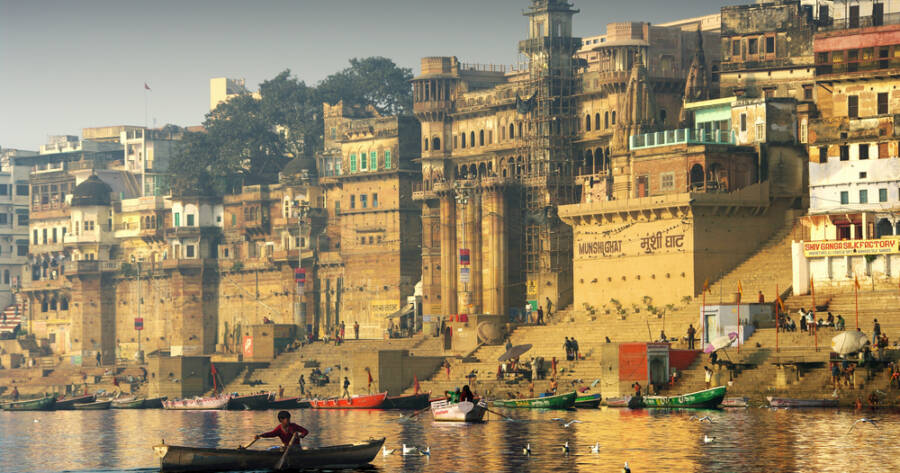Pilgrimage is more than just travel—it’s a spiritual journey shaped by devotion, tradition, and reflection. For thousands of years, people across cultures have walked sacred paths in search of healing, meaning, or connection to something greater. Some trails stretch across continents and faiths, uniting history and belief with the physical challenge of the road. Whether walked for religious reasons or personal growth, pilgrimage trails remain deeply moving experiences. Five of the most revered routes each carry stories of faith, endurance, and transformation.
1. Camino de Santiago – A Christian Trail Through Spain
The Camino de Santiago, also known as the Way of St. James, is one of the most famous pilgrimage routes in the world. Rooted in the Catholic tradition, it leads to the shrine of the apostle James in the cathedral of Santiago de Compostela in northwestern Spain. Pilgrims have walked this route since the 9th century, seeking forgiveness, spiritual renewal, or simply the quiet clarity of long-distance walking.
The most popular route, the Camino Francés, spans nearly 500 miles from the French border across the scenic countryside of northern Spain. Along the way, walkers pass through medieval towns, quiet fields, and rolling hills. While it’s rooted in Christianity, the Camino today attracts people of all backgrounds—some walk for spiritual reasons, others for personal growth or healing.
2. Kumano Kodo – Japan’s Sacred Forest Paths
In Japan’s Kii Peninsula, the Kumano Kodo offers a network of ancient pilgrimage trails winding through lush forests and mountains. This sacred route has been walked for over a thousand years by emperors, monks, and lay pilgrims visiting the Kumano Sanzan—three revered Shinto-Buddhist shrines.
The Kumano Kodo is unique because it weaves Shinto and Buddhist traditions together, reflecting Japan’s deeply intertwined religious heritage. Walking these moss-covered trails is not only physically rewarding but deeply meditative. Stone lanterns, quiet waterfalls, and occasional shrines offer moments of stillness throughout the journey.
For those who complete both the Kumano Kodo and Spain’s Camino de Santiago, a special “dual pilgrim” recognition is given—bridging cultures and continents through shared devotion.
3. Hajj to Mecca – The Islamic Pilgrimage of Unity
For Muslims, the Hajj is one of the five pillars of Islam and a duty that must be fulfilled at least once in a lifetime, if physically and financially able. Every year, millions of Muslims from around the globe travel to Mecca, Saudi Arabia, during the Islamic month of Dhu al-Hijjah to take part in a sacred series of rituals that date back to the Prophet Abraham.
While not a trail in the hiking sense, the Hajj is a pilgrimage in the truest meaning of the word. Pilgrims dress in simple white garments, symbolizing unity and humility. The journey involves moving between several holy sites, including the Kaaba, Mina, and Mount Arafat, each carrying profound historical and spiritual significance.
For many, the Hajj is a once-in-a-lifetime journey that transforms their relationship with faith, community, and self.
4. Mount Kailash Circuit – A Sacred Path in the Himalayas
In the remote western reaches of Tibet stands Mount Kailash, a mountain venerated by four religions—Hinduism, Buddhism, Jainism, and the indigenous Bön faith. Circumambulating this peak is considered one of the most sacred pilgrimages on Earth. For Hindus, it is believed to be the home of Lord Shiva. For Buddhists, it is the center of the universe.
The Kora, or pilgrimage circuit around Mount Kailash, is roughly 32 miles and typically takes three days. Pilgrims walk clockwise (except for followers of Bön, who walk counterclockwise), often enduring extreme altitudes and cold temperatures. Despite its difficulty, the walk is believed to erase sins and bring spiritual merit.
Because of its remote location and challenging terrain, few make the journey—but those who do speak of it as a life-changing experience filled with awe and reverence.
5. Varanasi to Sarnath – A Journey Through Buddhist and Hindu Heritage
In northern India, the spiritual city of Varanasi sits on the banks of the Ganges River and is one of the holiest cities for Hindus. Just a short distance away is Sarnath, where Gautama Buddha is said to have delivered his first sermon after attaining enlightenment.
While this pilgrimage route is relatively short compared to others, the symbolic distance between these two cities carries immense weight. Pilgrims can walk or travel from the chaotic energy of Varanasi to the calm, contemplative spaces of Sarnath, where Buddhist temples and stupas welcome seekers of all faiths.
This journey offers a rare chance to explore two rich spiritual traditions side by side, in the very place where they’ve coexisted for millennia.
One Path, Many Journeys
Each of these pilgrimage trails tells a different story—of people seeking healing, truth, or connection across geography and belief. Whether winding through forests, circling sacred mountains, or gathering with millions in holy cities, the act of pilgrimage reminds us that the journey is as important as the destination.
It’s a practice of slowing down, listening deeply, and letting the road teach us something about ourselves. In a noisy world, these ancient paths offer quiet, meaning, and a reminder that we’re all walking toward something greater.

